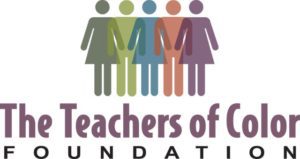 By Diana White, Edmonds School Board, Guest Blogger
By Diana White, Edmonds School Board, Guest Blogger
Many industries, companies, and systems have placed a growing emphasis on diversity in hiring, and the education arena is no different. Most of these organizations have found difficulty finding ways to increase their numbers of ethnically diverse employees. It is a difficult proposition.
The Edmonds School District, in coordination with several partners, believes we have found a way to move the needle to hire and retain more diverse candidates entering the teaching workforce.
Historically, the Edmonds School District teaching staff has been largely white, with nearly 92% representation in 2016.* However, the ethnic makeup of the district’s student population is over 50% non-white. Students of color now comprise the majority of our population, and they have been increasingly vocal about teachers, educators, administrators, and curriculum that reflect their diverse community.
The Edmonds School District’s early initiatives were similar to many districts – attending diversity recruitment fairs, specific publications, word of mouth, etc. As a result, the number of new teachers of color would slowly move in the positive direction, only to be thwarted by our inability to retain qualified teachers of color.
The Edmonds District and its team realized that a ‘grow your own’ model would be needed to provide the best success at recruiting, retaining and training teachers of color. Over the course of 18 months, the District, along with the school board, post-secondary educational institutions, a local philanthropic foundation, and a nonprofit, formed the Teachers of Color Program.
Here’s how it works:
Current classified employees who work in the Edmonds School District are eligible to apply for a Teachers of Color Scholarship. Many of these employees already work with our students as para-educators, coaches, and behavior specialists, and they are passionate about our students. The classified staff is more ethnically diverse, they live locally, and many are parents of children who have graduated from or attend our schools. Some have post-secondary education, but all have a desire to earn a teaching certificate.
A designated district employee is another integral part of the process. The Teacher Education Advancement Coordinator promotes and assists all employees who wish to enter the teaching profession. Examples include assisting potential students with financial aid opportunities and grants, or identifying pathways to alternative certification programs. A great amount of work has been done to develop the application process, interview, and vet the candidates for the Teachers of Color Scholarship program. The inaugural round produced 18 candidates, of which 4 were selected as our initial cohort. More candidates will be added as funding permits.
Our candidates are expected to undergo significant training on critical race theory, participate in mentoring programs, and advocate for other potential candidates. All are leaders in our schools, and role models for our students.
The funding model has focused primarily on a generous grant from the Hazel Miller Foundation. We also receive tuition waivers from Edmonds Community College, and hope to expand the number of tuition waivers in the future. Our research found that students historically struggle with financial barriers such as childcare costs, test and book fees, transportation to and from school, and inability to take time off for student teaching. The Hazel Miller grant allows flexibility to help students with living stipends, emergency expenses, and other costs outside of tuition that help the student succeed in attaining their teaching certification. Some of our students come to us already with a degree, but many will require assistance with the bachelor’s degree and teaching certificate. Our relationship with candidates will continue for several years, and support and assistance is tailored to each Teachers of Color recipient.
The biggest challenge to the Teachers of Color Program is I-200, Washington’s affirmative action initiative passed by voters in 1998. This law restricts hiring based on sex, age and ethnic diversity. No program monies are passed through the district, but instead are funded through a 501c3 nonprofit founded specifically to support this cause. The Teachers of Color Foundation was formed to provide a place for grants, tuition waivers, and other financial support for this program.
It took the collaboration of many to develop the Teachers of Color Program – a process that can be replicated in other districts. This program has the potential to make a visible impact on the ethnic diversity of educators in our district and mirror the diversity of our student population as we adapt to changing demographics across all our communities.

* Edmonds teacher diversity data from the Office of the Superintendent of Public Instruction (OSPI)
3 comments on “Increasing Teacher Diversity in the Edmonds School District”
While I applaud the Edmonds School District for at least attempting to address their overly white representation I am concerned with this idea of “grow your own” model. The problem that I feel this fails to address it the fact that people of color do in fact apply to work at the Edmonds School District. You give the impression that there is a lack of qualified applicants of color. That is not true. What is true is that the application process screens out candidates of color. If you look at the numbers provided by the districts human resource department you will see that people of color are applying but are being screened out. The School District should also examine their hiring committees that are made up of mostly white staff, which can have implicit biases toward people of color. In the blog post it was mentioned that cohorts will have to go through training on “critical race theory” but what about the 92% white staff at Edmonds. Are they required to go through training? You are asking people of color to go through training but do you ask the same of your non staff of color? What about the staff of color who experience racism and isolation from working in these environments Do you have support in place for them? You only said that there were “many” people that contributed to this but you didn’t mention any parents, staff, Administrators of color that contributed to this. I would hope that you had the opportunity for them to give their thoughts, share their expediences too. I’m sure introducing a program that is to increase the numbers of people of color in your district but failing to recognize the people of color currently in your district who contributed to this was an oversight. I hope the Edmonds School District will address the other issues that have prevented them from having a diverse representation in their district.
You are taking a great step by increasing teacher diversity in edmonds school district, it will effect a lot on the growth of education.
“Many of these employees already work with our students as para-educators, coaches, and behavior specialists, and they are passionate about our students. The classified staff is more ethnically diverse, they live locally, and many are parents of children who have graduated from or attend our schools. ”
I think this is an interesting statement and a clear indication of the current disparity among people of color and those with privilege both in our district and in our country today.
I applaud the district for creating work-a rounds for these issues and encourage the district to carefully monitor and examine para-Ed parameters and requirements to ensure they are not setting expectations for those para-Ed jobs higher than those with economic, language and educational opportunities and other challenges are able to meet, which could inadvertently work against retaining the current employment of diverse representatives as paras in the district.